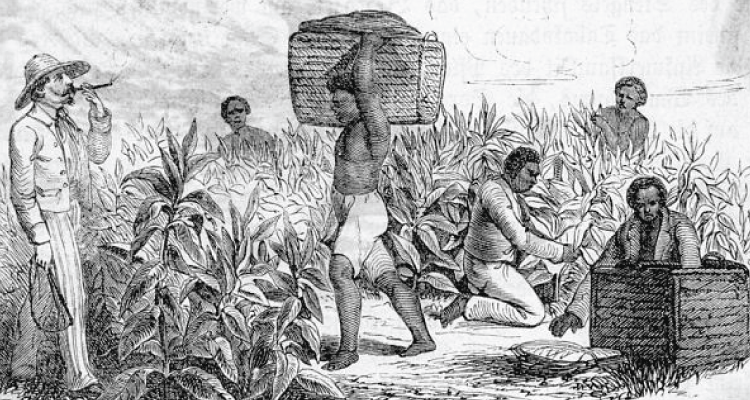The drain of wealth refers to the unidirectional outflow of a portion of India’s National product from India to Britain for which India received nothing in return. With the victory of the English Company in the battle of Plassey, the process of Drain of Indian wealth commenced & this outflow continued to increase throughout the remaining period of British Rule in India. The drain of wealth was the outlook of the colonial character of British Rule. British misused the political power to exploit Indian resources and to carry Indian wealth to Britain.
Mechanism of Drain: Indian Investment
It refers to the system in which the company used Indian resources to purchase Indian goods. These goods were exported to proceed with the trade out. Before the battle of Plassey, the company used to bring bullion to balance Indian trade. During 50 years before the battle of Plassey, the company brought bullion worth 20 million pounds. This scenario changed fundamentally after 1757 after the company started Indian resources to buy Indian goods.
These resources mobilized by the company by misusing political influence & domination to exploit Indian artisan & craftsman. Craftsmen were forced to sell their goods at very low prices. The craftsmen were forced to purchase raw material at very high prices. Craftsmen need to work for the company at very low wages & at a time without any wage at all. Zamindari rights & Dewani rights were also used by the company to mobilize resources in India.
Home charges
Home charges refer to the expenditure carried out by the English Company up to 1858 & the British government after 1858 in London on behalf of India. The component of Home Charges where the dividend is paid by the company to its shareholder, interest paid by the company on loan rose in London. Salary & pension of officials working in London on behalf of British India and pension of officials who worked in India but retired to London were other key components of home charges.
Also, the cost of civil & military purchases from London, the Home Charges comprised the most important component of the drain of Indian Work. About 10-13% of Indian revolt was drained out as Home charges up to 1857. This % increased to 24% from 1897-1901. In 1921-22 it was as high as 40%.
European Finance Capital
Charter Act of 1833 allowed Europeans to purchase immovable property in India. The entry of European Finance Capital was increased by providing pre-financial treatment. This capital was invested in railways, the plantation industry, banks, insurances & port, etc. All these European ventures were managed through the interlocking of agency (cross-holding of ownership). These ventures supported each other & kept Indians out. This monopoly control was used to make a maximum profit & this profit was drained out.
Consequences of Drain of Wealth
The drain of wealth deprived India of a significant portion of Indian resources. As a result, no capital formation could take place. In absence of capital, India couldn’t see Indian Resource. The Drain of Wealth resulted in the accumulation of huge capital in Britain & the availability of capital gave to boost to British Indian Resource.
The process of the drain of wealth was extremely exploitative. Peasant craftsmen the merchants of every other section of the population suffered immensely. The drain of wealth eroded the purchasing power of Indians, as a result of this Indian handicraft industry lost market. At the time Indians didn’t have money to buy food grain; this was an important reason behind recurring famine.
The wealth drained out from India returned later as European Finance Capital. The entry of this capital further intensified the economy-exploitation of Indians. The drain of wealth not only resulted in extreme hunger poverty & recurring famine but at the same, it resulted in the character degeneration of Indians. The extreme economic difficulties forced Indians to indulge in wrong activities.

The drain theory put forward by Dadabhai Naoroji, M.G. Ranad, and R.C. Datt exposed the true colonial character of British Rule. Indians could gradually realize that British Rule was essentially exploitative. The understanding of the true character of the British Rule intensified the spirit of nationalism.
The decline of Indian Handicraft
India was the biggest manufacturing nation in the world until the middle of the 18th Indian products were in great demand in the European market. A huge quantity of Indian goods was carried out by European Companies. In the words of Peter, the great of Russia, “Commerce of India is Commerce of World”. Indian share was 17% in world trade. The popularity of Indian handicraft goods could be realized from fact that the British parliament enacted laws in 1710 & 1720 to prohibit the use of Indian cloth.
This great manufacture lost its industrial base almost completely by the middle of the 19th This declined was the outcome of the direct/indirect effect of British Rule. The drain of wealth eroded the purchasing power of Indians as a result of which the demand for the HC market got reduced. Because of the drain of wealth, no capital was available for the investment to improve the health of the Indian Handicraft industry.
The destruction of the native court by the British took away the patronage of Handicraft & seriously reduced the market of their goods. The native courts were big consumers of luxury Handicraft products. The native ruler used to patronize artisan & craftsmen. The policy of one way free trade imposed on India doomed the faith of the Indian Handicraft industry.
High tariff banners were erected to block the entry of Indian goods into the British market. On other hand, duty-free entry allowed British market made goods. This unnatural competition gave a death blow to the Indian Handicraft industry. The policy of westernization of India persuades by British changed the consumption pattern because the western-educated Indian middle class preferred western products. The demand for Indian goods got reduced drastically.
The exploitation of Indian artisan & craftsmen forced many of them to abundant many additional activities. Indian craftsmen were exploited to such an extent that many of them had cut their thumb to escape from suffering. Railway also played an important role in the decline of Indian Handicraft. The railways were developing in the Indian scheme of minimum guaranteed return.
A minimum return of 5% guaranteed by the government on the capital invested in the development of railways. The government gave land for railway development free of cost rail owners were given complete freedom to determine fair & other similar activities Indian railway was the unique existence of private venture at public risk. The venture built at a huge cost to India was used to exploit India economically.
The railways were used to connect ports with the market so that the maximum possible quantity of British goods could be exported to remotest Indian corners. Railways were used to connect the port with filed so that the maximum possible quantity of raw material could export. This export of raw material increase cost to Indian Handicraft & they lost their competitive edge.
Consequences of Decline of Indian Handicraft
The decline of Indian Handicraft gave a death blow to the urban economy & de-urbanization was witnessed in India. The migration of Art & Craft villages resulted in excessive pressure on land. Large scale unemployment was witnessed because people lost their additional occupation. The Ruralization of the Indian economy was taking place as urban components disappear as a result of industrialization. Poverty, hunger, famine became an essential feature of the Indian economy as a result of the decline of the Handicraft industry.

